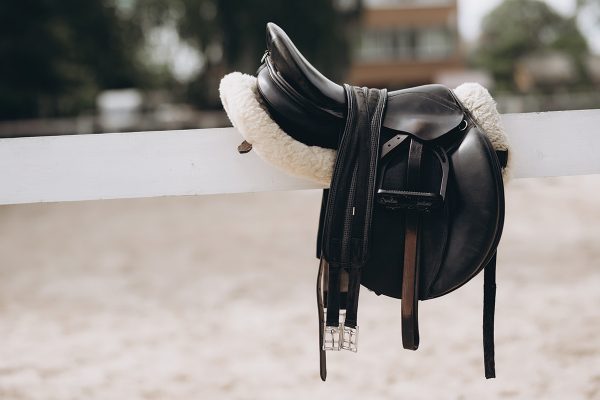
Have you noticed how much tack is made with fleece? It’s no wonder. Fleece is soft against the horse. It helps prevent rubs and pressure point sores. Since fleece is fluffy, it also allows for some airflow against your horse’s skin, which helps to prevent hot spots. The bad news is that fleece gets dirty easily. Then it loses its fluffy magic. The good news? You can get fleece tack clean and soft again by following these steps.
1. First, hang your fleece items outside on a tack hook or over a fence rail. Then mix up a sudsy bath in a clean tub or large bucket. For the soap, use a big squirt of any baby shampoo in the water.
2. Smaller items, like fleece-lined (washable, non-leather) cinches and girths, can be dunked into your soapy mix. For larger items, like saddle pads, get them wet first with the hose; then slather on the soapy mix with a sponge. In both cases, be sure to rub the suds into the fleece with your fingers.
3. Rinse fleece thoroughly with cool water. A strong spray from a hose can remove both the soap and dirt and grime.
4. Hang wet fleece items to air-dry. While still damp, use a wire brush to fluff up the fleece. A clean tail brush from your tack box works well, but the best choice is a wire dog grooming brush.
Tip
“Fleece” is generally a term for artificial sheepskin. Genuine sheepskin items tend to include the leather and real wool. These require more care when cleaning. You’ll need to use specialized shampoo and follow the manufacturer’s directions.
Once your fleece tack is washed, dried, and fluffed, it will be ready to use again. Your horse will thank you for keeping him looking sharp and feeling comfortable.
This article about how to clean fleece tack appeared in the Summer 2020 Digital Mini issue of Young Rider magazine. Click here to subscribe!


